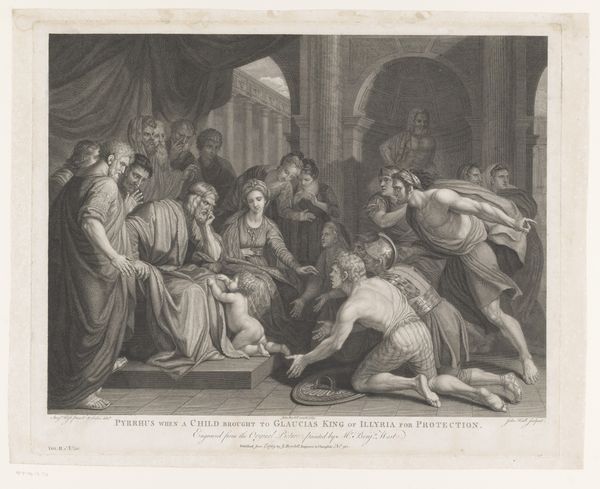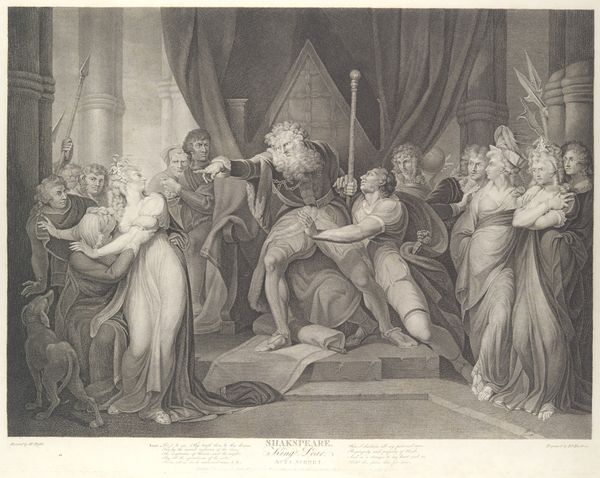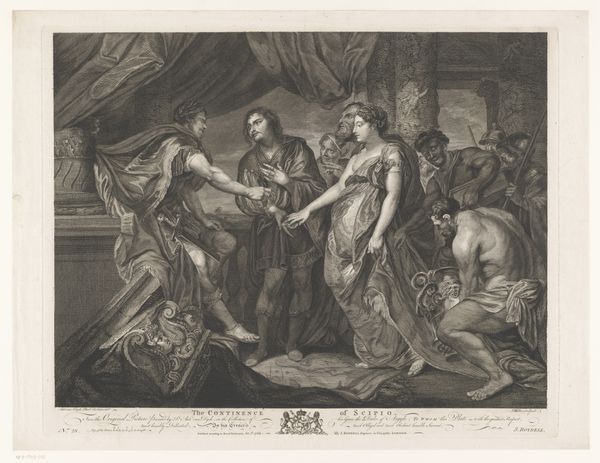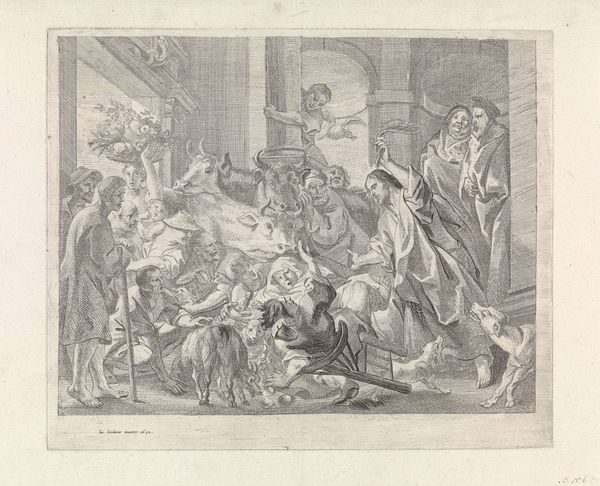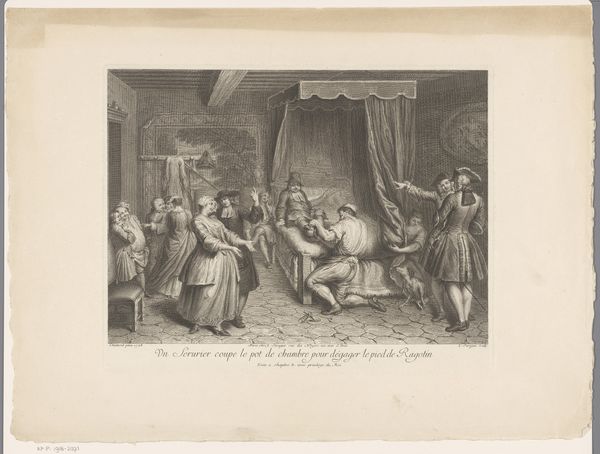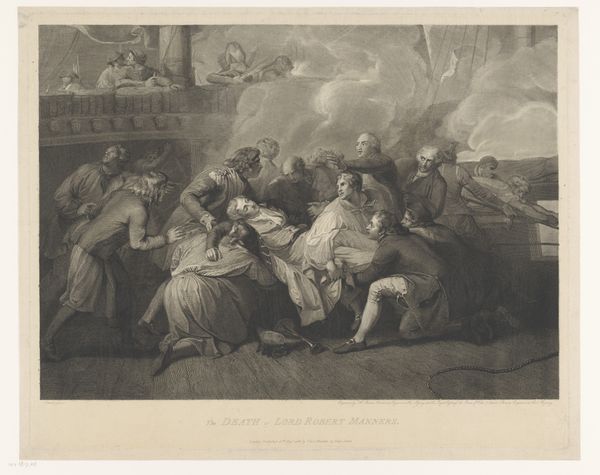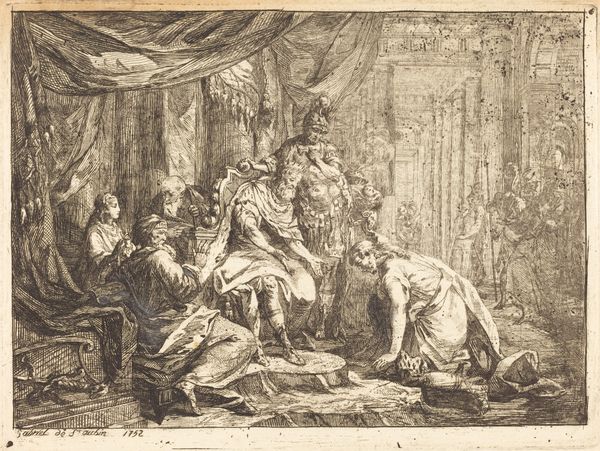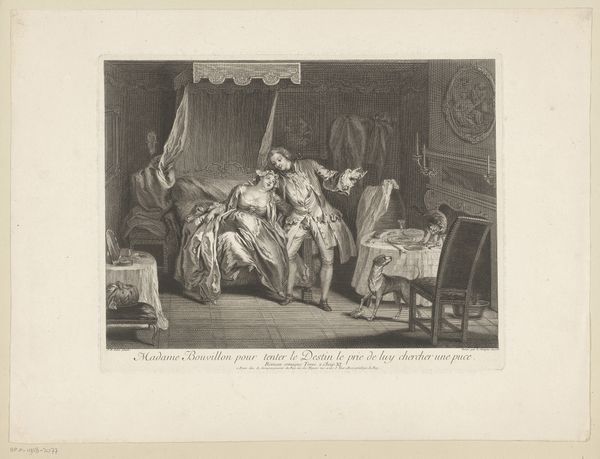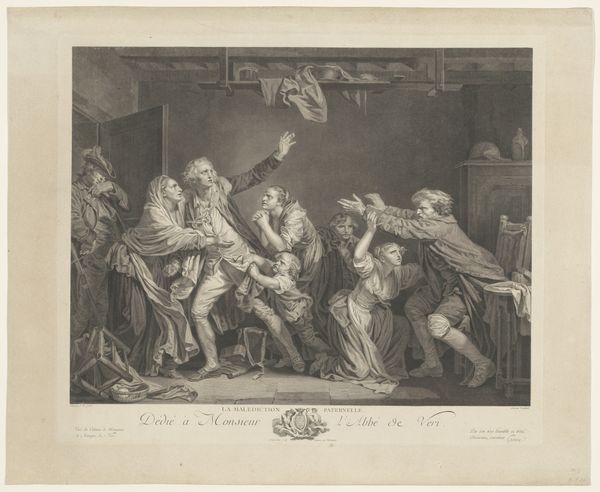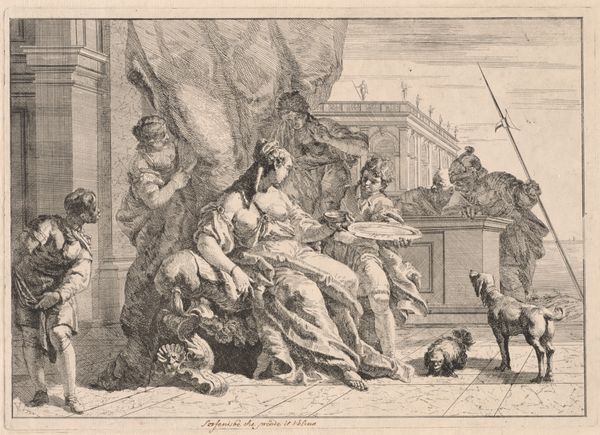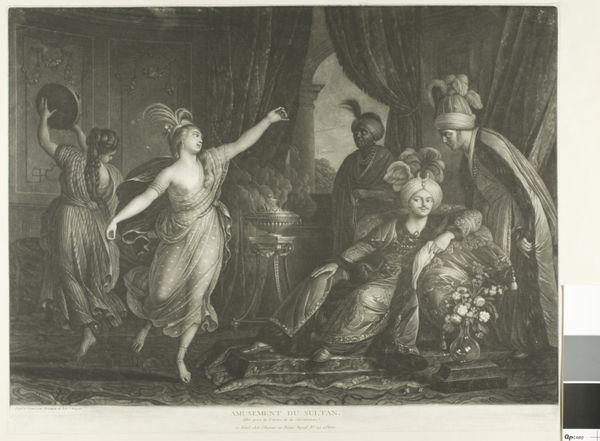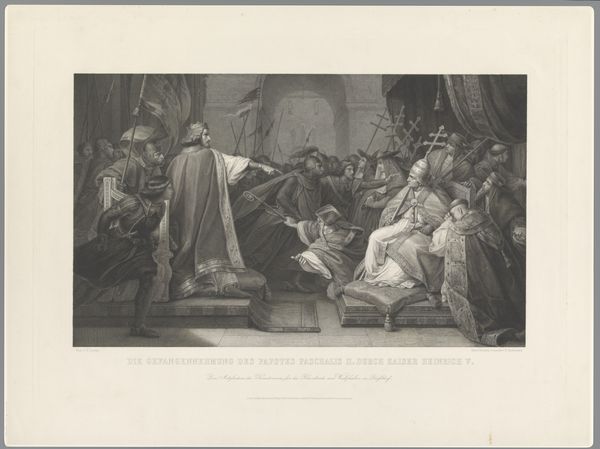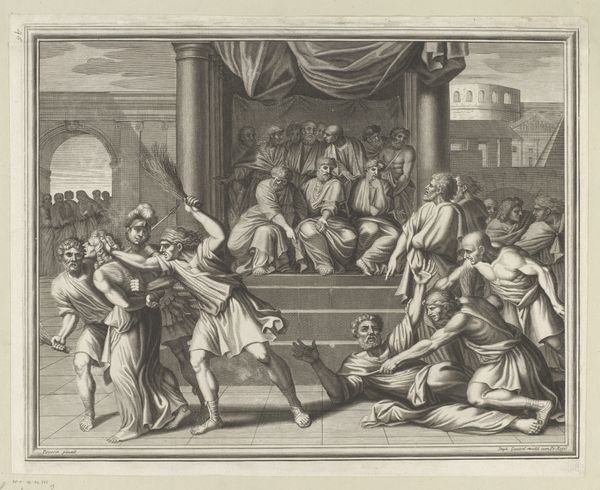
Het lichaam van sultan Tippoo wordt herkend door zijn familie 1775 - 1810
0:00
0:00
drawing, print, charcoal, engraving
#
portrait
#
drawing
# print
#
charcoal drawing
#
romanticism
#
islamic-art
#
charcoal
#
history-painting
#
charcoal
#
engraving
#
realism
Dimensions: height 590 mm, width 697 mm
Copyright: Rijks Museum: Open Domain
This print, made by Luigi Schiavonetti, shows the body of Sultan Tippoo being recognized by his family. It’s made using a process called etching, where lines are cut into a metal plate with acid. The plate is then inked and printed, transferring the image to paper. The fine lines achieved through etching allow for a high level of detail. You can see the texture of the fabrics, the expressions on the faces, and the architectural details of the room. This level of detail wasn't just about aesthetics; it was also a way to convey information and reinforce a particular narrative. Prints like these were often made in multiples, allowing them to be distributed widely and consumed as news. The labor involved was skilled and technical, relying on the etcher's expertise in manipulating the metal plate. But it was also a business, part of the growing print industry that shaped public opinion and disseminated knowledge during the period of colonial expansion. By understanding the materials and the making process, we see how this image functioned not just as a work of art, but as a piece of propaganda, reflecting the politics of its time.
Comments
No comments
Be the first to comment and join the conversation on the ultimate creative platform.
